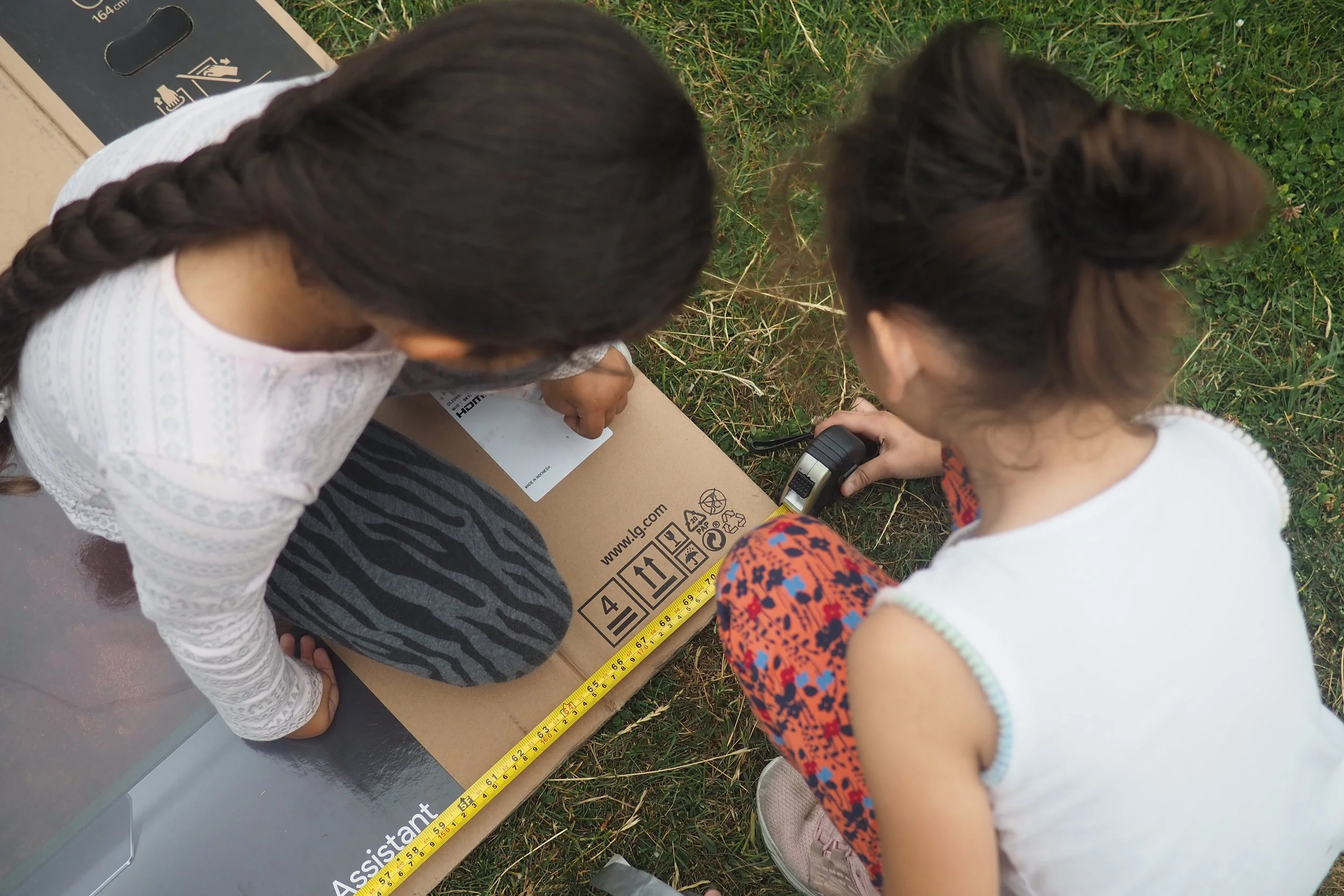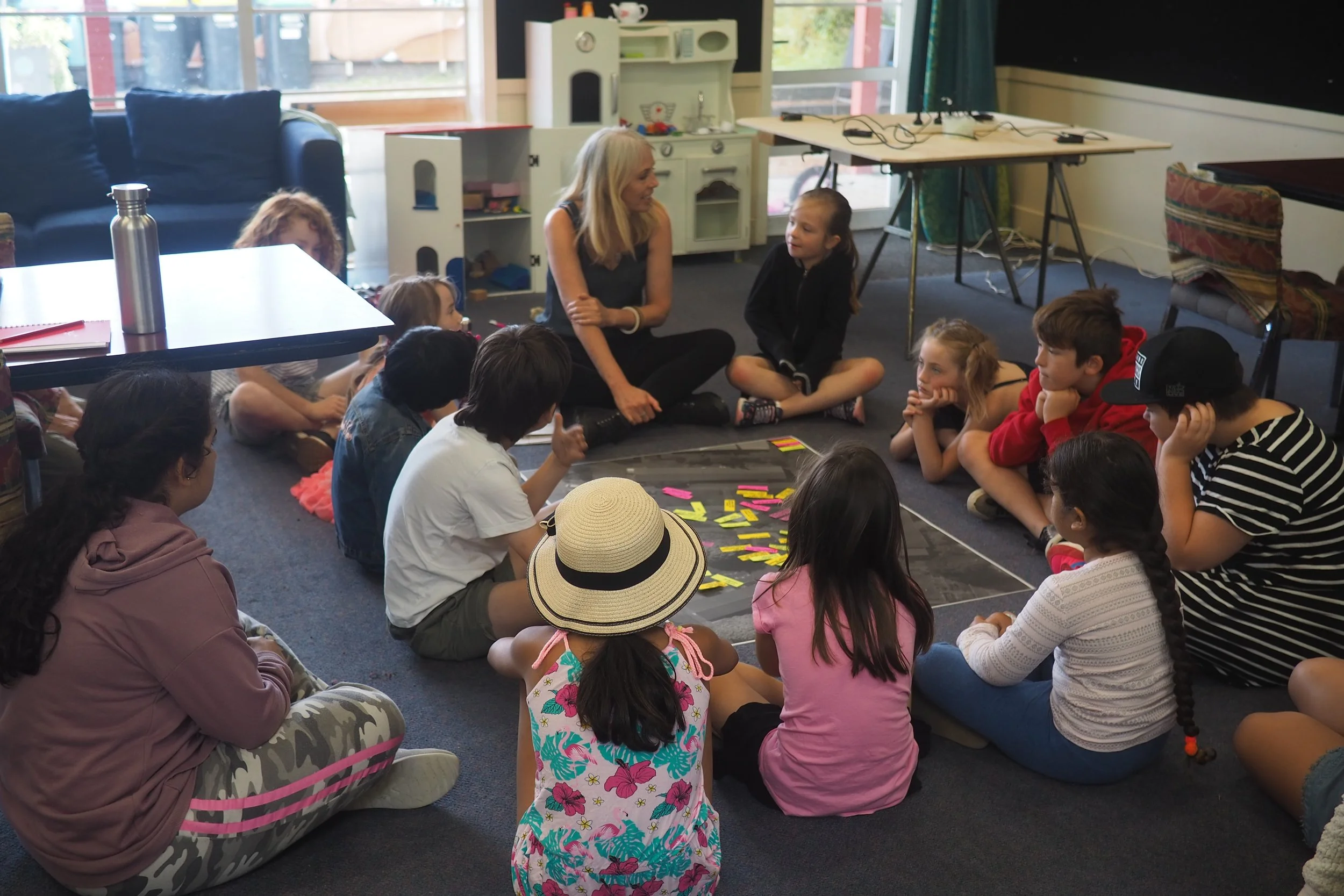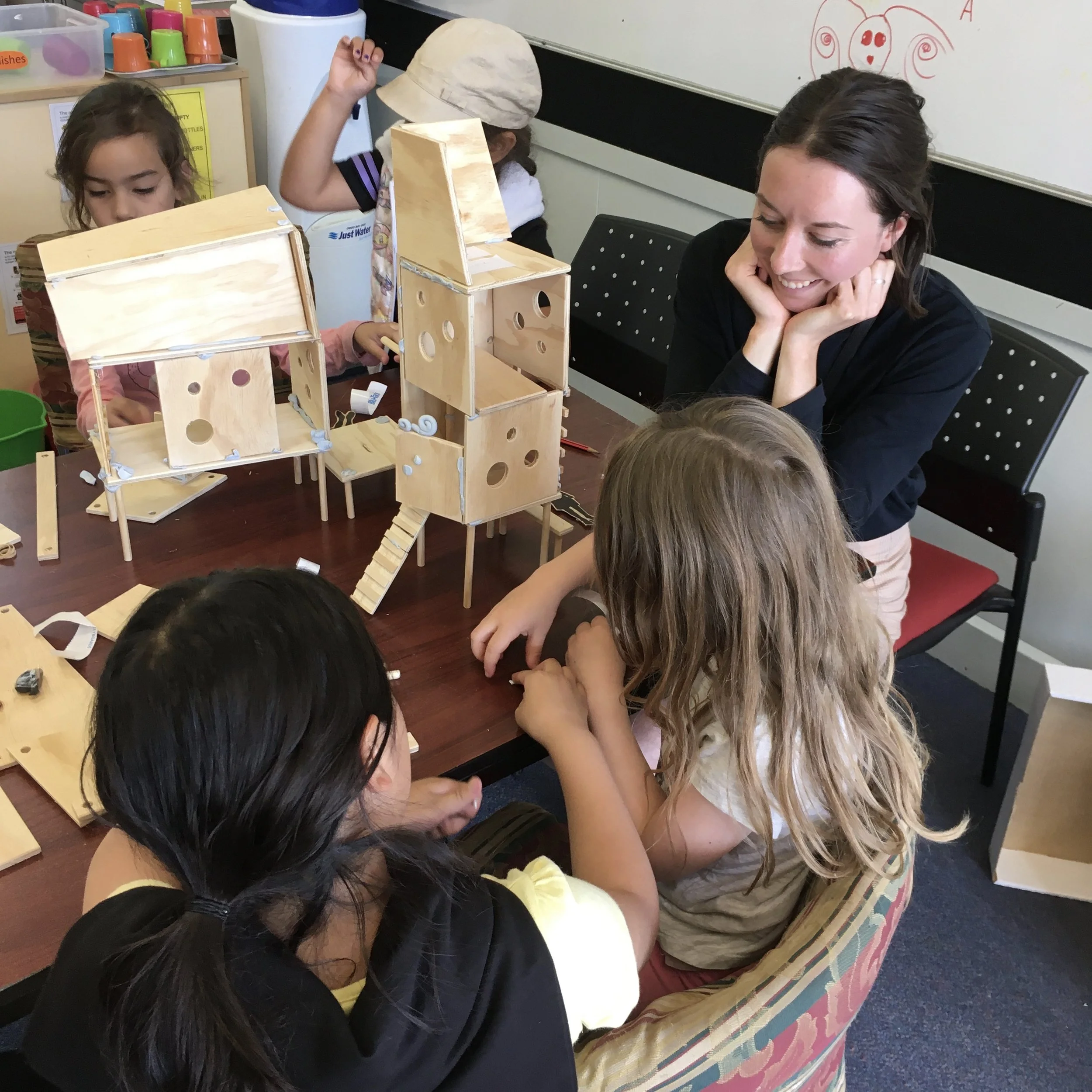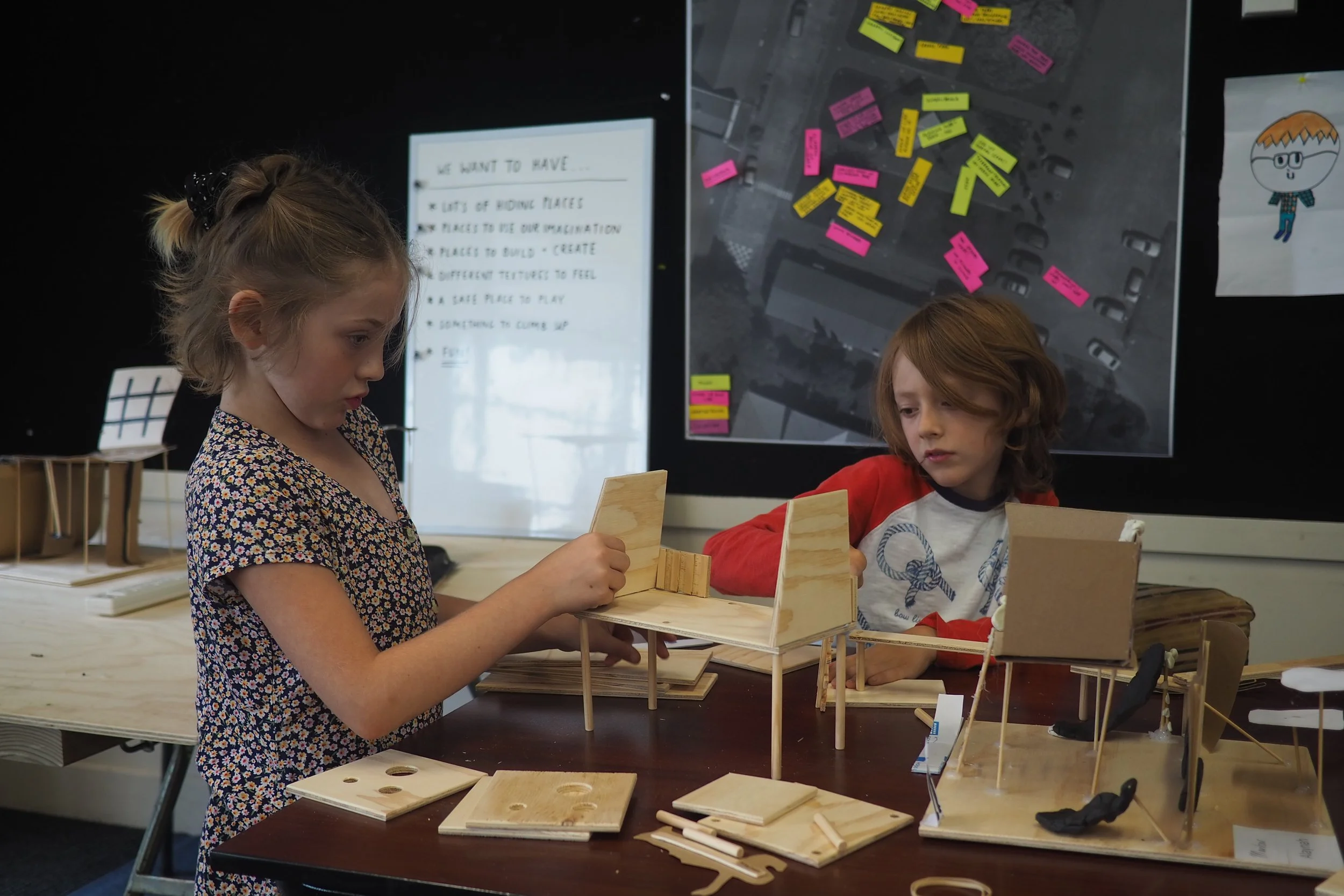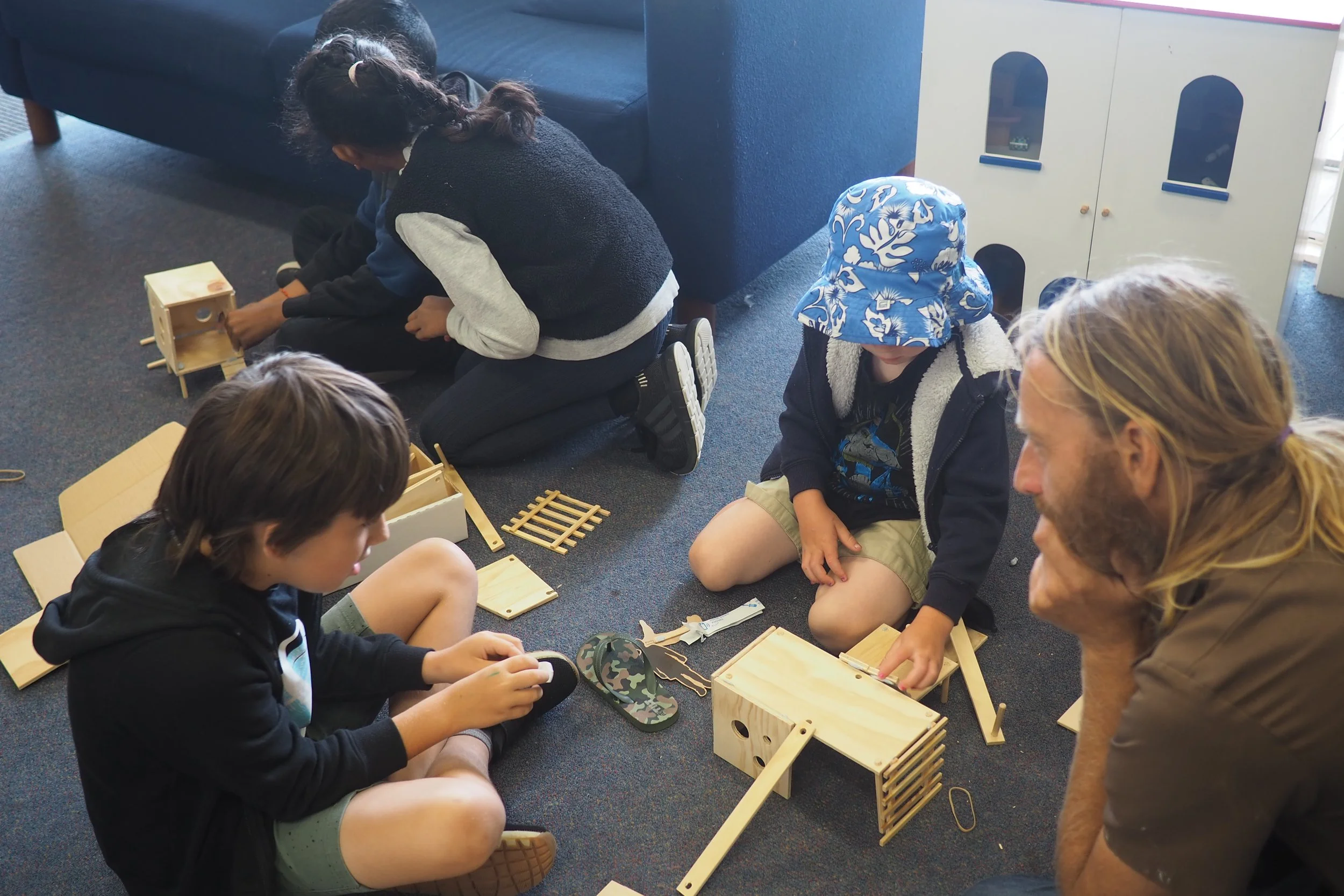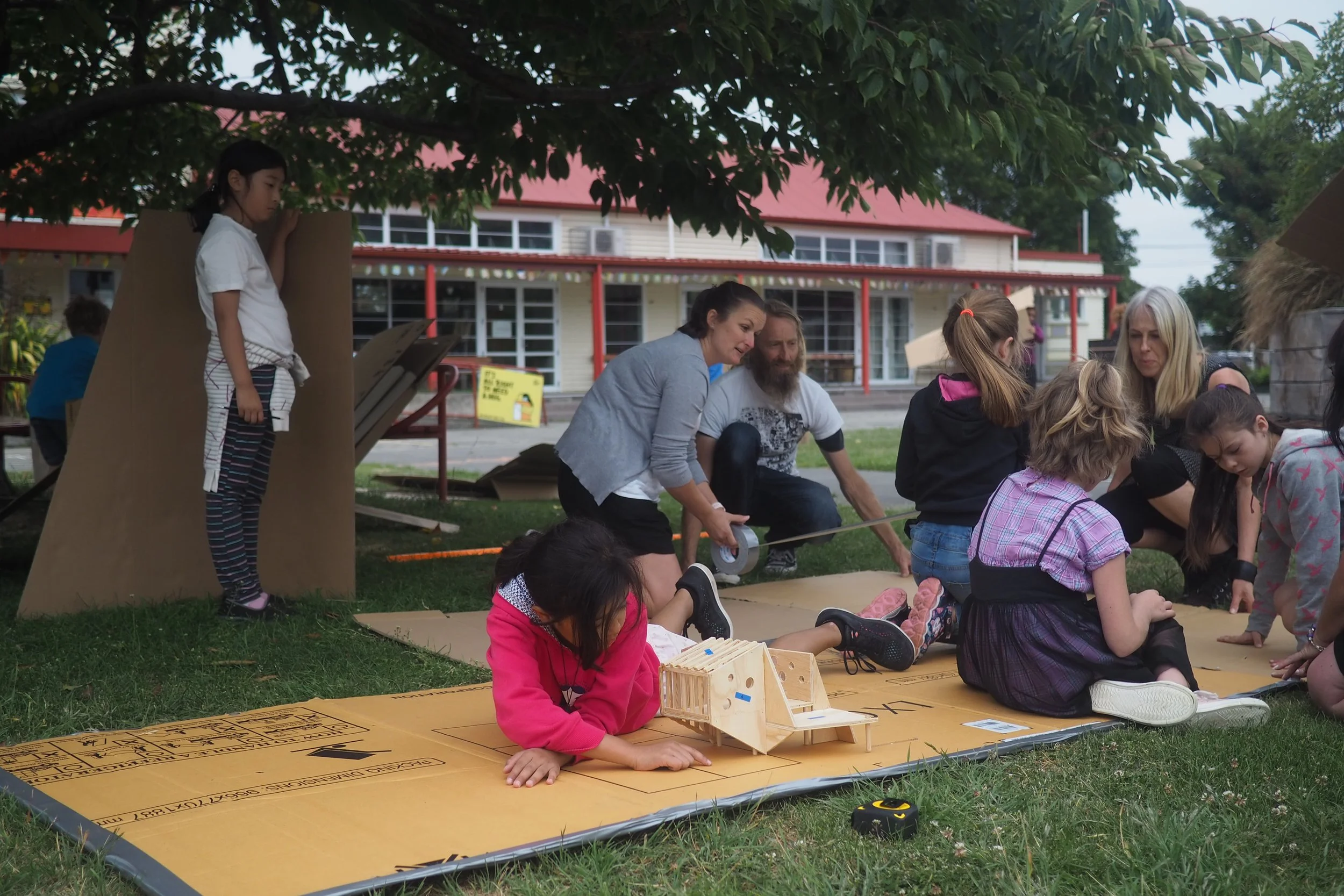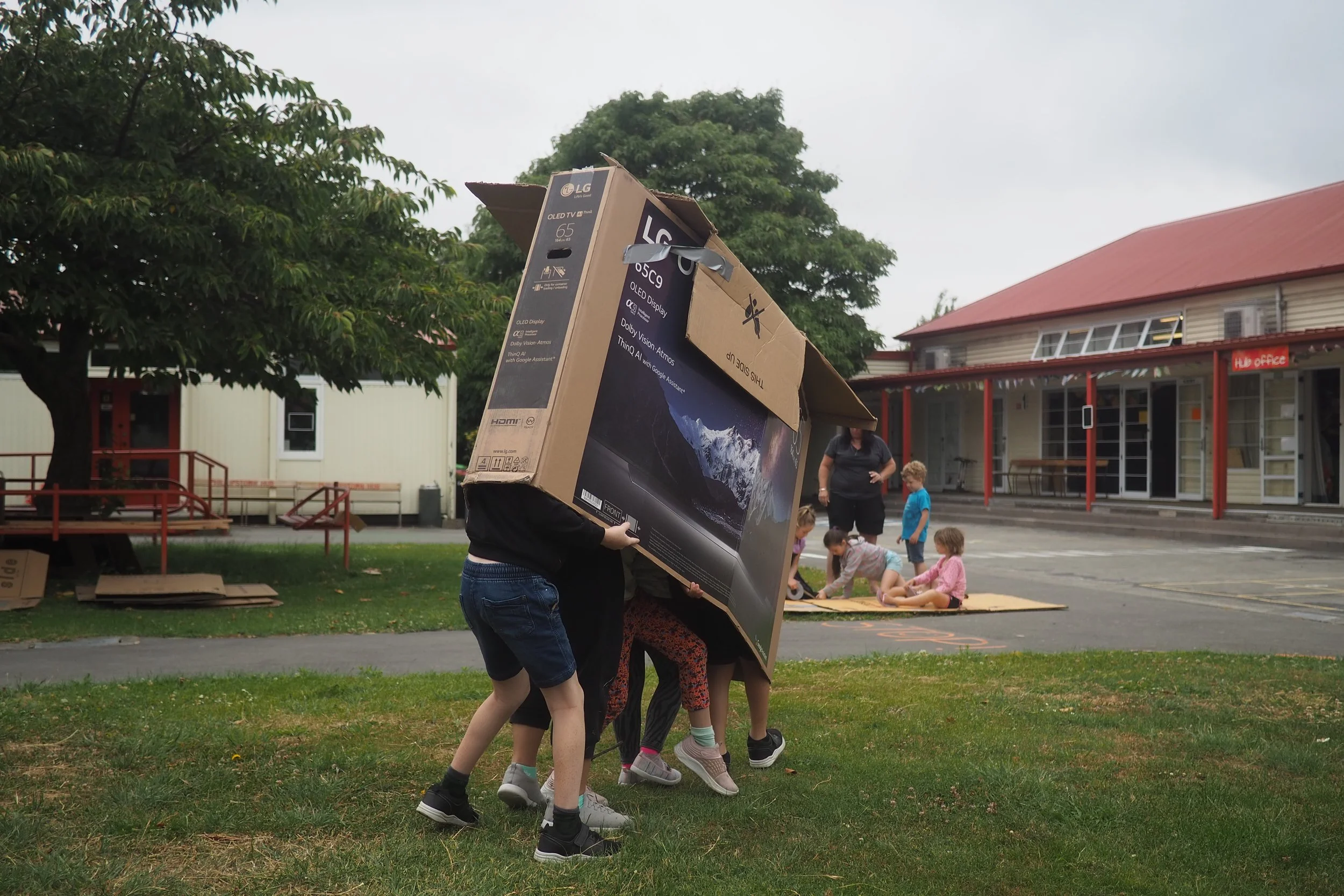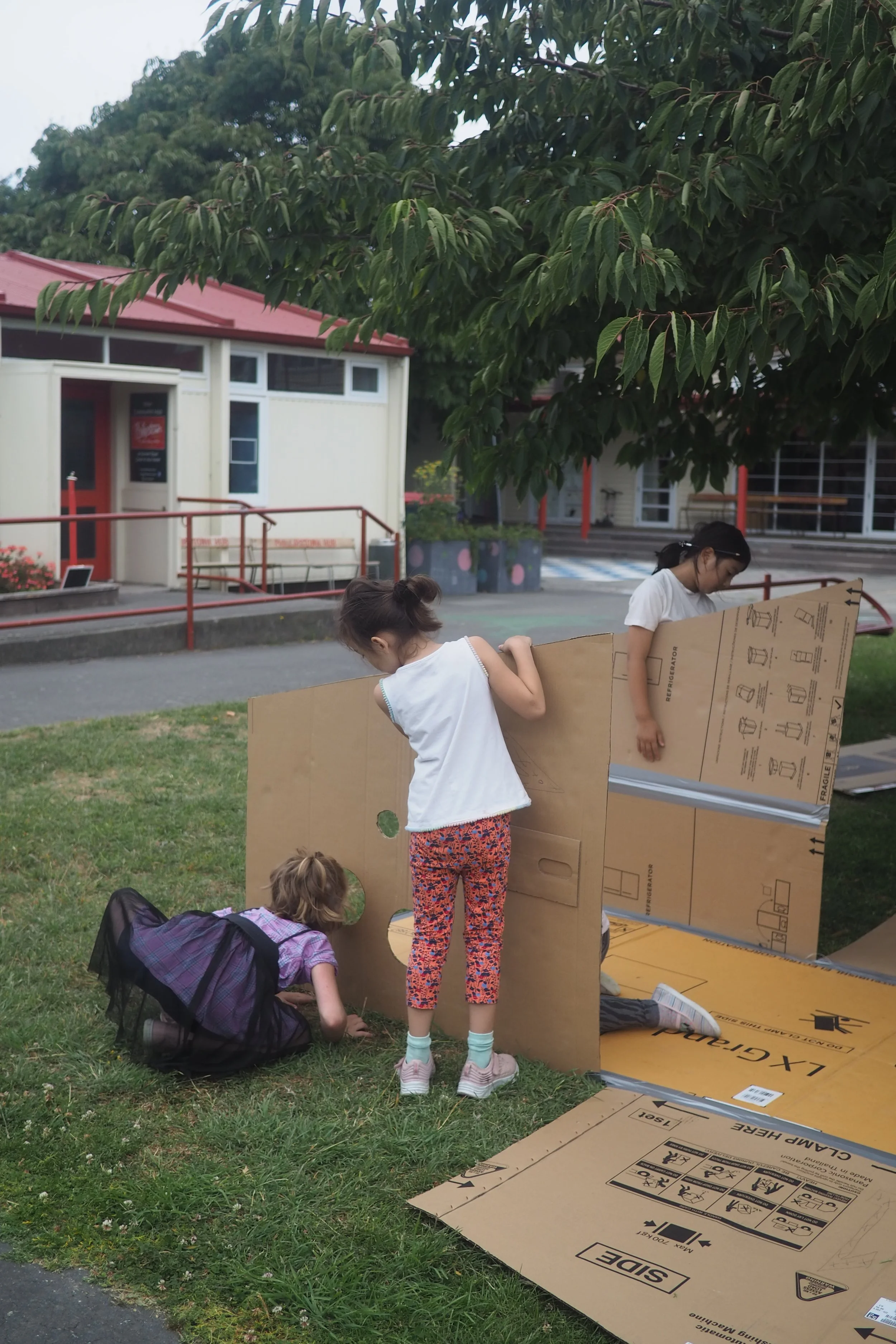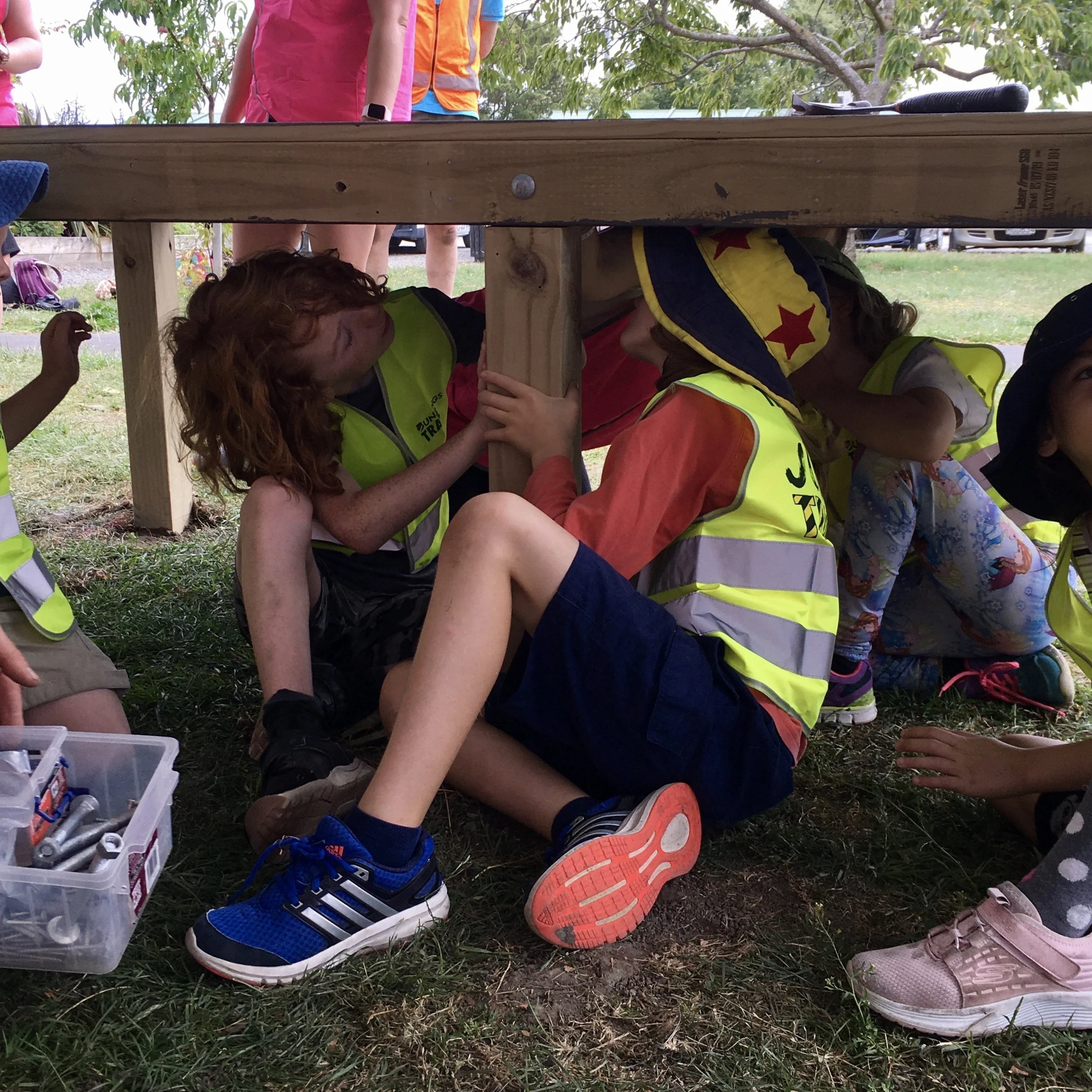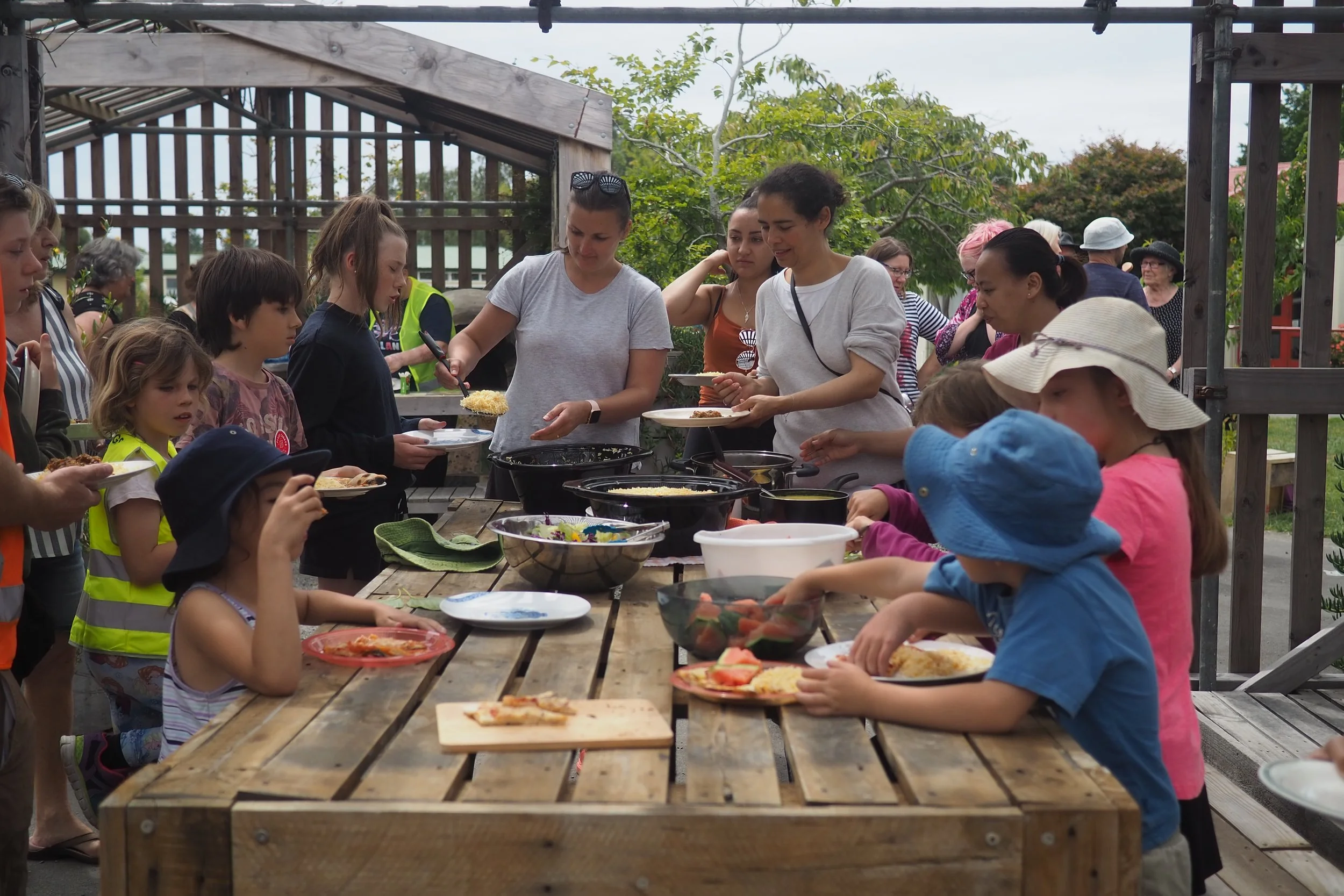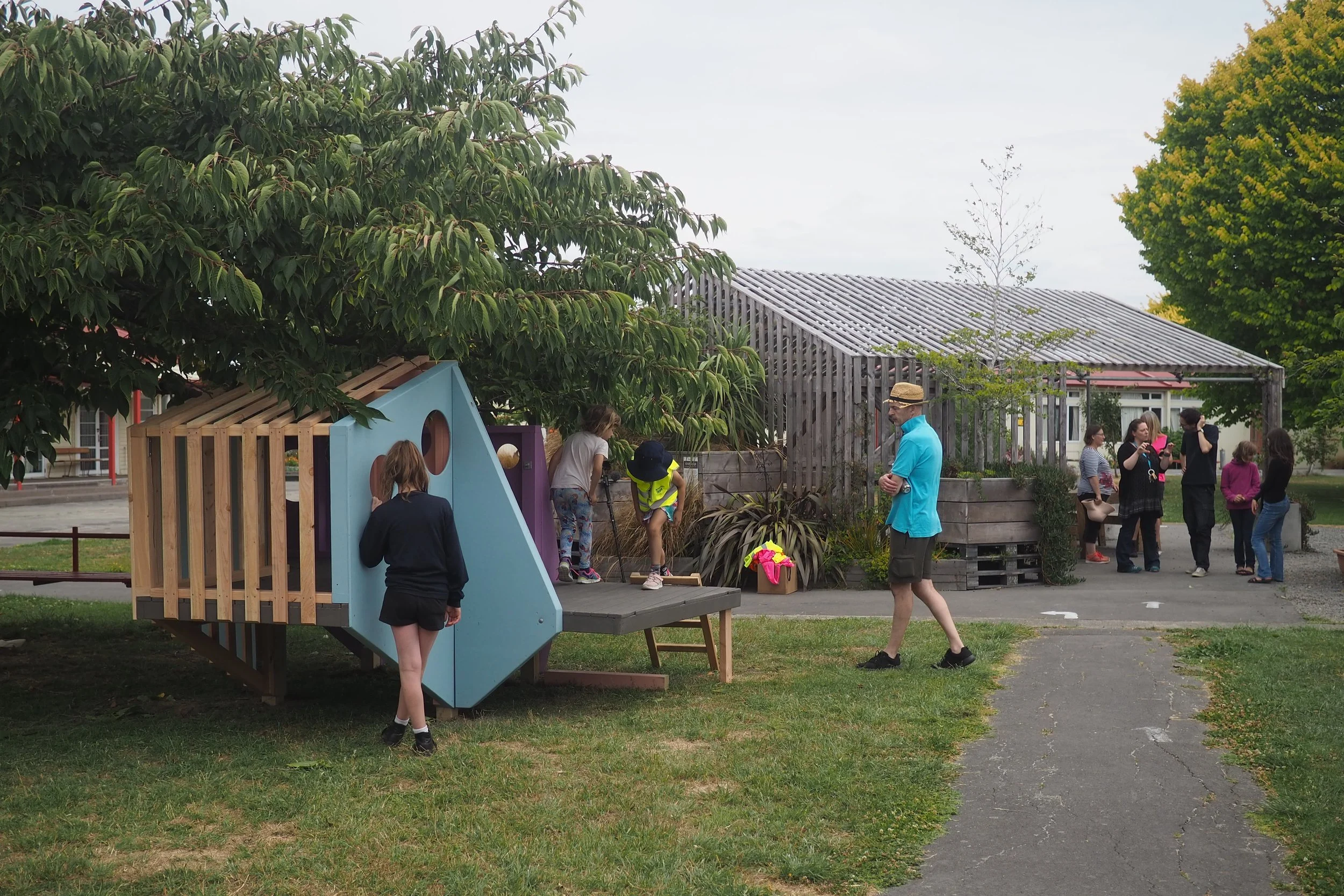Place Cadets: Exploring Design Thinking
A different way to design with community
Place Cadets at Phillipstown Hub was a small and powerful project that explored what happens when children are considered not just as users of public spaces, but as active designers of it!
Over two weeks of the summer school holidays, twenty-one tamariki aged five to eleven joined us on a hands-on journey through the design process. From sketching and model-making to 1:1 prototyping, the kids led the creation of a modular, site-specific play structure for their outdoor play space. It was child-centred design in action … joyful, grounded, and deeply connected to place.
Why this project came to life
In partnership with Phillipstown Community Hub, this project grew from a shared desire to engage the community in more meaningful ways, especially those who don’t respond to traditional engagement methods like surveys or consultation drop-ins.
By focusing on tamariki, we opened a new path for community co-design. The children’s curiosity and creativity didn’t just shape the structure, they catalysed wider participation. Their ideas were shared with each other, with the Hub Trust, and eventually the whole neighbourhood.
From idea to Imaginarium
The result was a modular play structure named The Imaginarium, imagined and built by tamariki with help from the design team, their whānau and the wider community. We celebrated with kai at Kotahitanga (another community-led design project), joined by local businesses, councillors, and local MP Duncan Webb, all there to support the kids and their mahi.
This kind of inclusive design shows the value of co-designing public spaces with people, not just for them. And in this case, the people leading the design were five to eleven years old.
Why it matters
Place Cadets is a reminder that when we involve children in the design process, the impact goes far beyond the final structure. It builds connection, confidence, and a strong sense of belonging. The project demonstrated how co-design with tamariki can spark participation across the wider community.
As landscape architects, it reinforces the importance of the social responsibility we carry … to design public spaces that reflect, include and uplift the full diversity of our communities. Our mahi doesn’t stop at the end result. It starts with creating meaningful, inclusive design processes.
Keen to know more … explore these projects!

